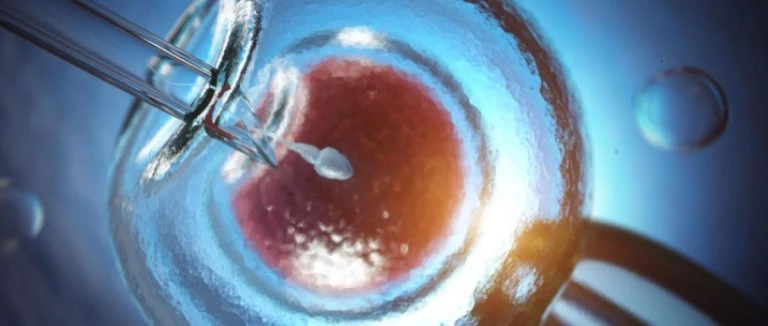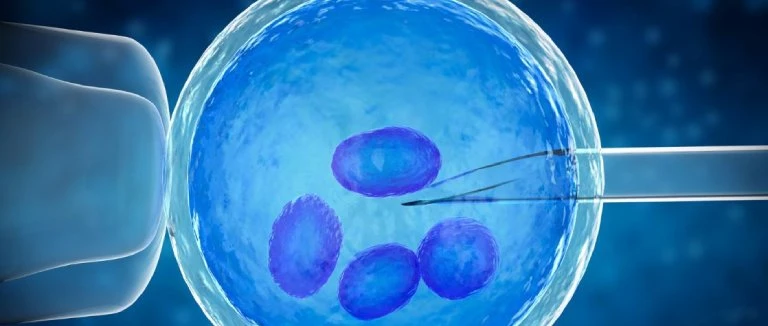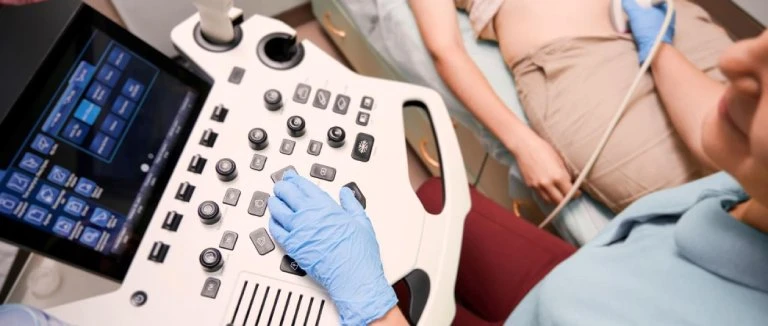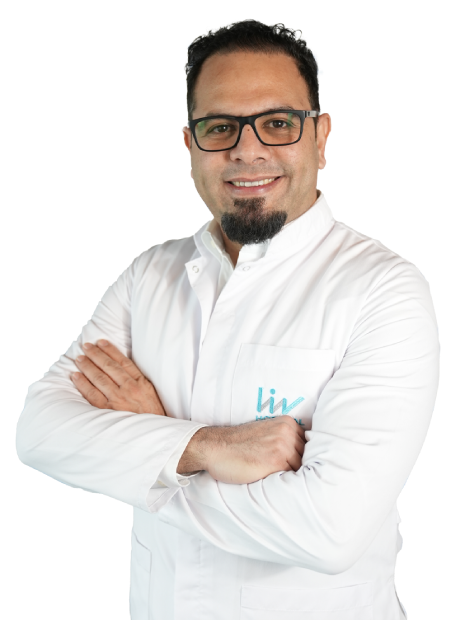In Vitro Fertilization -IVF- is an advanced assisted reproductive technique that can greatly increase the chances of having a child for couples facing infertility. Common questions about this treatment include: "What is IVF and how is it defined in medical literature?, "What does the IVF process involve?, "Is the success rate the same for every couple?, and "How is IVF treatment performed? These and other frequently asked questions about IVF are addressed in detail throughout the rest of this article.

What is In Vitro Fertilization -IVF-?
If pregnancy does not occur after one year of regular, unprotected intercourse, couples should seek evaluation for infertility. Numerous factors can contribute to infertility. In women, conditions such as diminished ovarian reserve due to aging, blocked fallopian tubes, polycystic ovary syndrome (PCOS), or other health concerns may make conception difficult. In men, low sperm count or quality and hormonal imbalances are common challenges. For many couples, conception naturally isn't always possible due to these or other issues.
Infertility is now recognized as one of the most prevalent health problems worldwide, affecting around 10-15% of couples of reproductive age. In some cases, infertility can be traced to either the woman or the man alone, while about 20% of couples diagnosed with infertility face contributing factors in both partners. Fortunately, advances in science and technology have enabled the development of assisted reproductive techniques, such as intrauterine insemination (IUI) and In Vitro Fertilization -IVF-, which can help couples achieve pregnancy when natural conception is not possible.
IVF, or in vitro fertilization, is a process where an egg (the female reproductive cell) and sperm (the male reproductive cell) are combined in a laboratory setting. The resulting embryo is then transferred into the woman's uterus, increasing the chance of pregnancy.
How is IVF Performed?
IVF treatment involves retrieving mature eggs from a woman's ovaries and fertilizing them in a laboratory with sperm obtained from a man”either naturally or through assisted techniques such as micro TESE. Once fertilization occurs, one or two high-quality embryos are selected and transferred to the uterus of the mother-to-be, with the goal of achieving a successful pregnancy.
How does IVF Happen?
During IVF treatment, eggs collected from the prospective mother are fertilized in the laboratory with sperm from the prospective father. After fertilization, one or two of the highest-quality embryos are chosen and carefully transferred into the mother's uterus using a thin catheter.
What are the Stages of IVF Treatment?

During IVF treatment, mature egg cells are collected from the woman under general or local anesthesia, and the collected eggs are combined with a sperm cell in a laboratory environment to produce an embryo. The steps usually followed in the in vitro fertilization treatment process are as follows:
- Stimulation of egg cells: One of the main stages of IVF treatment is the stimulation of egg cells. At this stage, depending on the woman's general state of health and egg reserve, IVF needles or various medications that help with egg stimulation are used. Under normal conditions, in a healthy woman, one egg matures every month and is excreted from the ovaries. It is aimed to stimulate more than one egg cell to increase the chances of success in IVF treatment.
- Egg collection: In the process of stimulating egg cells, a specialist doctor monitors the development of follicles with the help of ultrasound approximately every 2-3 days. When the eggs reach sufficient maturity, the egg collection stage is started. This stage is usually performed with the help of general anesthesia. Mature eggs are collected with the help of an empty needle inserted into the ultrasound probe. Since local or general anesthesia is used during the procedure, pain is usually not felt in patients.
- Sperm collection: Sperm should also be taken from the man on the same day as egg collection. Under normal circumstances, men give a sperm sample by masturbation in a sterile environment. In case the man cannot give sperm by normal means or in case the man has azoospermia i.e. no sperm cells, a sperm sample can be taken by entering with auxiliary techniques such as micro TESE.
- Combining eggs and sperm: At this stage, the eggs collected from the woman and the sperm taken from the man are expected to combine spontaneously in the laboratory environment and fertilization will occur. Today, with the positive developments in assisted reproductive techniques, techniques such as micro-injection technique are also coming to the fore. Since the sperm is injected directly into the egg in the micro-injection method, the chances of obtaining a high-quality embryo may be higher.
- Embryo transfer: After fertilization, embryo development is regularly checked by specialists working in the laboratory every few days. At this stage, couples who have a genetic health problem in their family may request a genetic diagnostic test. The day of embryo transfer is decided by considering the development of the embryos. Usually, the transfer process is performed 3-5 days after fertilization. At this stage, it is decided how many embryos will be transferred by considering at the woman's age and previous unsuccessful IVF attempts. Usually, one or two embryos of high quality are selected and placed in the woman's uterus with the help of a thin catheter. There is usually no need to administer any anesthesia for embryo transfer.
After the embryo transfer, a pregnancy test is performed 10-12 days later and it is checked whether the embryo has been attached, that is, whether pregnancy has been achieved.
What are the Risks of IVF Treatment?
Rarely, some complications may occur during or after IVF treatment. The main risks of IVF treatment are as follows:
- Transferring more than one embryo at the transfer stage may increase the risk of multiple pregnancies. However, thanks to the positive developments in the field of health technology today, the chances of achieving a pregnancy with a single embryo transfer are also quite high. According to the regulation published in the Official Gazette in 2010 about Reproductive Assisted Treatment Practices and Reproductive Assisted Treatment Centers, in our day one embryo can be transferred in all first and second applications up to the age of 35, two embryos in the third and subsequent applications, and a maximum of two embryos can be transferred in all applications in women aged 35 and older.
- Some studies show that the risk of premature birth may be higher in pregnancies achieved by in vitro fertilization method.
- Drugs used to stimulate the ovaries during treatment can rarely cause overstimulation of the ovaries, and ovarian hyperstimulation syndrome.
What Is The Difference Between IVF And A Normal Baby?
The primary difference between IVF and natural conception is that, in IVF, fertilization of the sperm and egg takes place in a laboratory setting under the supervision of specialists. Aside from this initial step, pregnancies achieved through IVF are no different from those conceived naturally in terms of the pregnancy experience and process.
What is the Difference Between Intrauterine Insemination and IVF?
Intrauterine insemination (IUI), like IVF, is a treatment option that assists reproduction when pregnancy cannot be achieved naturally. IUI is often chosen in cases of male-related infertility. The main difference between these two treatments lies in the fertilization process. In IUI, sperm collected from the male partner is inserted directly into the woman's uterus to facilitate natural fertilization. In contrast, during IVF, eggs and sperm are fertilized outside the body in a laboratory, and the resulting embryo is then transferred to the uterus.
Who Does the Sperm Belong to in IVF Treatment?
According to the laws of the Republic of Türkiye, only reproductive cells obtained from the couple themselves may be used in assisted reproductive techniques. The use of donor eggs, donor sperm, or reproductive cells from anyone other than the intended parents is strictly prohibited in IVF and similar treatments.
Who Are the Suitable Candidates For IVF Treatment?

IVF treatment is a commonly chosen assisted reproductive technique for couples who are unable to conceive naturally. When a couple seeks help from an IVF center due to infertility, the process typically begins with a series of blood tests for the woman, ordered by a specialist in obstetrics and gynecology. These tests, usually conducted on the second or third day of menstruation, measure hormone levels such as FSH, LH, and TSH to check for potential issues like polycystic ovary syndrome. Additionally, the anti-Müllerian hormone (AMH) level is tested to assess a woman's egg reserve.
Imaging procedures, including ultrasound and hysterosalpingography, are used to evaluate the uterus and fallopian tubes. After a thorough examination of the woman, a detailed evaluation of the male partner may also be conducted by a urology specialist, if necessary.
It's important to note that IVF is not always the initial treatment for every couple diagnosed with infertility. Depending on the underlying cause, the specialist may first recommend other assisted reproductive options such as ovulation induction or intrauterine insemination (IUI). However, if IUI is unsuccessful, or if there is a diminished egg reserve or low sperm count, IVF treatment may become the recommended or only option.. So in which cases is IVF treatment performed? The main cases of IVF treatment can be listed as follows:
- Causes of female origin: When making a diagnosis of infertility, imaging techniques such as hysterosalpingography are used primarily to check whether a woman has a blockage in the fallopian tubes. If there is a blockage in the tubes, pregnancy cannot be achieved because the sperm cannot pass through the channels and reach the egg. In this case, IVF treatment may be necessary. In addition, polycystic ovary syndrome is one of the main health problems that cause infertility in women. Ovulation problems may occur due to an imbalance in FSH/LH hormone levels in polycystic ovary syndrome, the cause of which is not known for sure. In this case, IVF treatment may also need to be used.
- The risk of genetically transmitted diseases: If any of the couples has a genetically transmitted health problem such as thalassemia (Mediterranean anemia), or Behçet's disease, IVF treatment can be used to minimize the risk of having the same health problem in the baby.
- Causes of male origin: Reproductive problems can be seen in men as well as in women. Researches show that in 40% of couples diagnosed with infertility, the problem is caused by the man. After examining the semen analysis taken by masturbation in men in the laboratory environment, and after detecting problems in sperm count, quality and/or mobility, the specialist doctor may recommend IVF treatment.
In addition to those listed above, in case of recurrent pregnancy losses in vitro fertilization treatment may also be required.
How Many Times Can IVF Treatment Be Tried?
While there is no official limit to the number of times IVF treatment can be attempted, research suggests that the success rate does not significantly increase after three cycles. Therefore, undergoing more than three rounds of IVF often does not lead to higher chances of success.
In How Many Months Is Vitro Fertilization Treatment Repeated?
For couples undergoing IVF treatment, each treatment cycle lasts approximately 3 to 4 weeks. If pregnancy is not achieved by the end of this period, and the mother's overall health allows, subsequent cycles can often be started without interruption.
What Should I Eat After The Transfer So That the Embryo Attaches on to the Uterus?
There is no strong evidence that any specific food can improve embryo implantation after transfer. However, maintaining a diet rich in fiber, vitamins, and minerals, and staying well-hydrated before and during pregnancy can help support a healthy pregnancy process.
What Should I Not Eat After the Transfer?
There are no specific food restrictions following embryo transfer. However, it is important to eat a healthy, balanced diet and choose foods that are low in fat during pregnancy. Additionally, avoiding harmful habits such as smoking and alcohol is strongly recommended throughout this process.
Symptoms of Attachment After IVF Transfer
It is common to experience lower back or groin pain in the days following embryo transfer. Implantation bleeding can also occur, similar to naturally conceived pregnancies. However, these symptoms do not confirm that the embryo has successfully implanted. The most reliable way to determine successful implantation is by measuring the Beta HCG hormone level in the blood, typically 10-12 days after the transfer.
In How Many Days Does Embryo Attach in In Vitro Fertilization?

In successful IVF treatment, it becomes clear within about 10-12 days whether the embryo attaches to the uterus of the mother-to-be.
In Which Cases Can IVF Baby Can Not Attach Itself?
The success rate of IVF depends on several factors, including the age of the mother, the quality of the embryos, and whether the mother has harmful habits such as smoking or alcohol consumption.
Does Miscarriage Occur After the Embryo Attaches Itself?
Similar to naturally conceived pregnancies, pregnancies achieved through IVF also carry a risk of miscarriage during the first trimester, which is the initial three-month period.
What are the IVF Prices? What is the Cost of Treatment?
The cost of IVF treatment can vary based on the healthcare institution providing the service and whether specialized techniques, such as micro TESE or micro-injection, are used during the treatment.
Nowadays, couples with infertility problems can increase their chances of having a baby with the help of assisted reproductive techniques such as IVF treatment. Infertility diagnosis and treatment services at Liv Hospital are provided by physicians who are specialists in the field. Do not neglect to make an appointment with a specialist doctor and have the necessary checks.
* Liv Hospital Editorial Board has contributed to the publication of this content .
* Contents of this page is for informational purposes only. Please consult your doctor for diagnosis and treatment. The content of this page does not include information on medicinal health care at Liv Hospital .
For more information about our academic and training initiatives, visit Liv Hospital Academy
Frequently Asked Questions
Until what age do I have the chance for in vitro fertilization?
The success rate of IVF varies depending on many different factors. While the chances of success of IVF treatment are higher in young women, this rate may be lower in women over the age of 42. However, being at the ideal weight, eating healthy, staying away from harmful habits such as alcohol consumption and smoking can also increase the chances of success of IVF treatment.
Is IVF safe?
Pregnancies achieved by in vitro fertilization are no different from pregnancies acheived naturally. However, some complications may occur due to excessive egg stimulation during treatment. However, IVF treatment applied by doctors who are specialists in their field is generally a safe method.
How many hours does IVF surgery take?
During IVF treatment, the egg collection stage takes about 15-30 minutes. In addition, the transfer phase is completed in about 10-15 minutes.
Can those who are pregnant with IVF have a normal birth?
Mothers-to-be who become pregnant by in vitro fertilization method can have a normal birth if deemed appropriate by a specialist physician.
What should I eat for the baby to attach on to the uterus?
There is no definitely proven food that will help the baby to attach on to the uterus. However, as before every pregnancy, it is recommended to eat a healthy and balanced diet after IVF.
When should couples who cannot have children resort to IVF treatment?
Couples who cannot have a baby despite a regular, unprotected intercourse for a year are evaluated for infertility. Couples, who do not get positive results from other assisted reproductive techniques such as ovulation induction, or when the woman's egg reserve is reduced, the man's sperm count is insufficient, can apply to in vitro fertilization clinics.
Does the first IVF baby result in miscarriage?
With the help of science and technology developing today, IVF embryo has a chance to attach at the first attempt.
Is there an age limit in IVF in men?
There is no age restriction in IVF for men.
After how many minutes is it safe to go to the toilet after the transfer?
After the transfer, the mother-to-be is asked to stay in bed for a while. You can go to the toilet after about 20-30 minutes.
Does miscarriage occur after the embryo attaches itself?
There is a risk of miscarriage in the first 3 months, as in pregnancies achieved in the normal way. In couples who cannot achieve pregnancy by natural means, this situation can also be psychologically uncomfortable.
